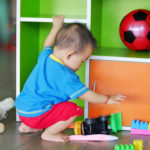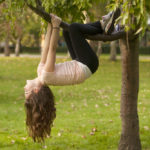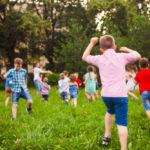It is so exciting when our babies start moving and grooving. We love to see our babies crawl! Some babies prefer to move forward with one side of their body while using the other side minimally or not at all. This means they rely more on one arm and one leg to propel themselves forward, Read More
Category: Move
Balance
Balance is a motor skill that uses large muscle groups in the body. It is related to locomotion skills (getting from one place to another) like crawling and walking. Balance is also its own developmental milestone. The head is the fastest growing part of the body at birth, which is why infants and toddlers have Read More
Physical Play and Self Control
Self-control is an important part of emotional development. It is what allows children to manage their feelings and regulate their behavior. The University of Cambridge did an interesting review of 78 studies that had been conducted between 2007-2017. What they found was that children who had more playtime with their fathers had better self-control, were Read More
Explore the Outdoors
4 Ways to Explore the outdoors with your children Exploring the outdoors is a great way to inspire creativity, an appreciation for the natural world, breathe fresh air and get physically active as a family! According to Sanford Health outdoor play: Builds cognitive & social/emotional health Benefits physical health through aerobic exercise and Vitamin D Read More
Physical Activity Benefits Start Young
Preventative measures for heart health start as young as 3 years old, according to a large study published in the journal Pediatrics. The study took place over three years, looking at over 400 children ages 3-5 years old. The findings indicated that all physical activity had a positive effect, but more intense physical activity was Read More
Physical Activity And Learning
A recent study has concluded that incorporating physical activity into teaching time increases learning. For example, ask students to answer a true/false question by jumping up and down to indicate “true” and doing a jumping jack to indicate “false.” Alternatively, have students jump to match the answer to a math question—e.g. if the answer is Read More






